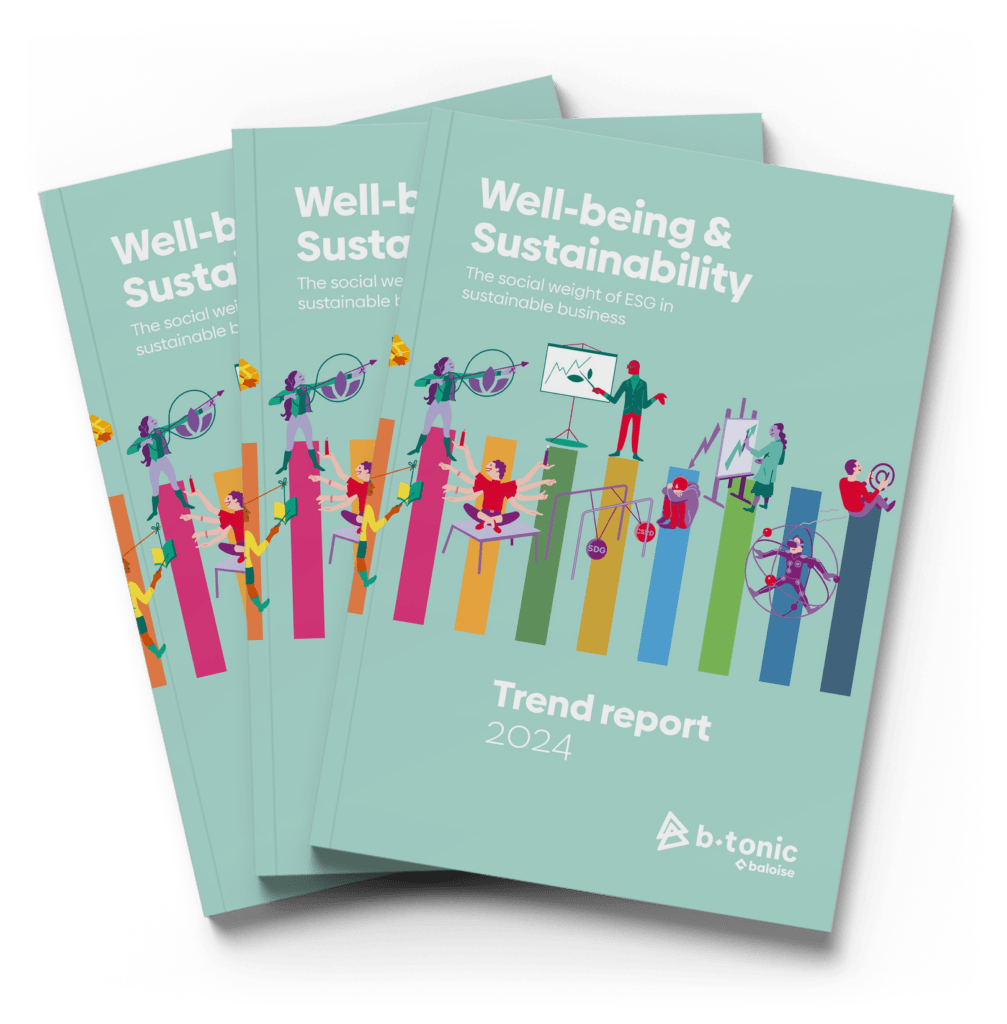An ESG report is principally about the 'non-financial' figures...
Content:
What goes into an ESG report?
An ESG report is principally about the ‘non-financial’ figures. It wants to say something about long-term vision or direction within the company and thus also about being future-proof. Reports in sub-areas such as CO2, circular economy, safety or child labour can be a part of it.
The goal of the ESG report is to give a structured overview of a company’s performance regarding environment, social responsibility and corporate governance. The content will naturally vary, depending on the reporting standards and the specific company, but an ESG report usually includes the following elements:
- Introduction: An introduction to the company, the reporting period and the objective of the ESG report
- Company profile: A description of the company, including the activitities, the markets in which it operates and the principal stakeholders.
- Sustainability strategy: An overview of strategies, goals and initiatives of the company in the field of sustainability, including the integration of ESG factors in business operations.
- Environmental aspects: An analysis of the environmental performance of the company, such as energy and water usage, greenhouse gas emissions, waste management, biodiversity and climate-related risks.
- Social aspects: An evaluation of the impact of the company on social aspects, such as well-being, working conditions, health and safety, diversity and inclusion and customer relationships.
- Governance aspects: An evaluation of the corporate governance structure of the company, including the composition of the board of directors, ethical behaviour, transparancy, remuneration policy and shareholder engagement.
- Performance management: Quantitative and qualitative data that illustrate the ESG performance of the company in the reporting period, such as Key Performance Indicators (KPI’s), benchmarks and comparisons with previous periods of time.
- Risk management: Identification and analysis of ESG related risks faced by the company, as well as the strategies and measures taken to control and reduce these risks.
- Ecosystem: An overview of the engagement of interested parties, such as investors, clients and other stakeholders, regarding the ESG initiatives of the company.
- Future goals: An overview on sustainability goals and initiatives the company intends on implementing in the upcoming periods of time.
What are ESG regulations?
The pressure for sustainable entrepreneurship also comes from political quarters. For instance, in June 2022 the European Council and European Parliament reached a (preliminary) political agreement on the Corporate Sustainability Reporting Directive (CSRD). This new directive requires a large group of enterprises (250 or more employees) to report on the impact their company has on people and the environment from 2026 on. This information must be verified by an accountant.
The new CSRD directive also broadens the scope of companies that must publish a sustainability report. It thus applies to a much larger number of companies – a rough estimate would be about 50.000 in our country – active in all sectors.
The regulation applies to your company if you meet the following conditions:
- You have a company with over 500 employees. In that case, you report from 2025 on the financial year 2024.
- You have a company with over 250 employees and/or €40 million in earnings and/or €20 million in assets. In that case, you report from 2026 on the financial year 2025.
- You have a small or medium-sized company (or another form of company). In that case, you report from 2027 on the financial year 2026.
Do realise that companies that do not need to report yet will experience pressure coming from their stakeholders to start reporting sooner than legally required. We call this the trickle-down effect or pressure from clients, employees, suppliers, … that consider sustainable entrepreneurship to be crucial to sustainable value creation. In this way, ESG compliance becomes a catalyst for employer branding and reputation management.
Do you want to know when and if your company has to report?
Fill out our short questionnaire and find out here.Fill out our short questionnaire and find out here.



